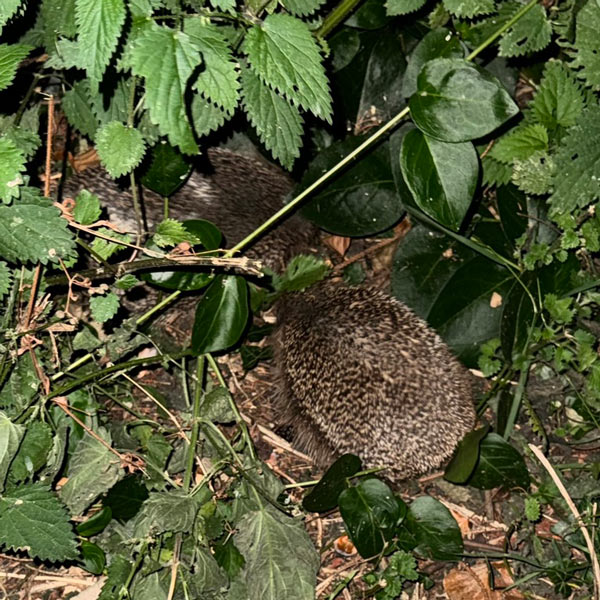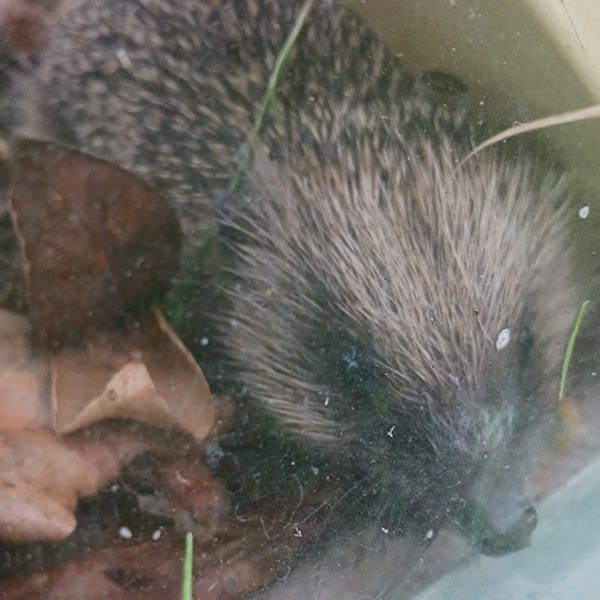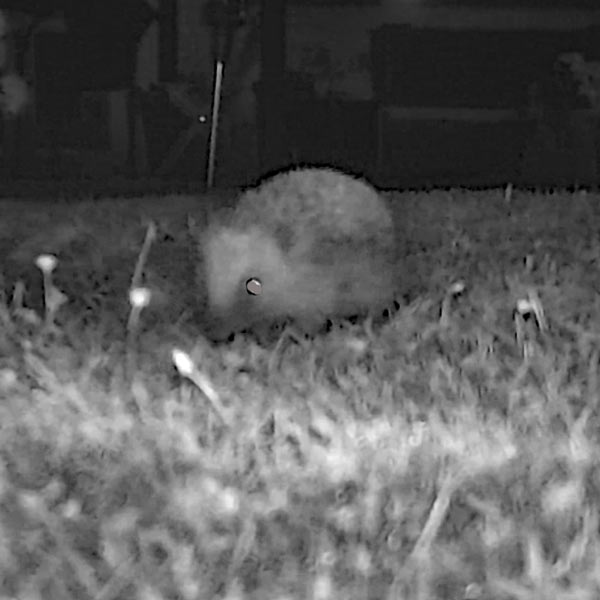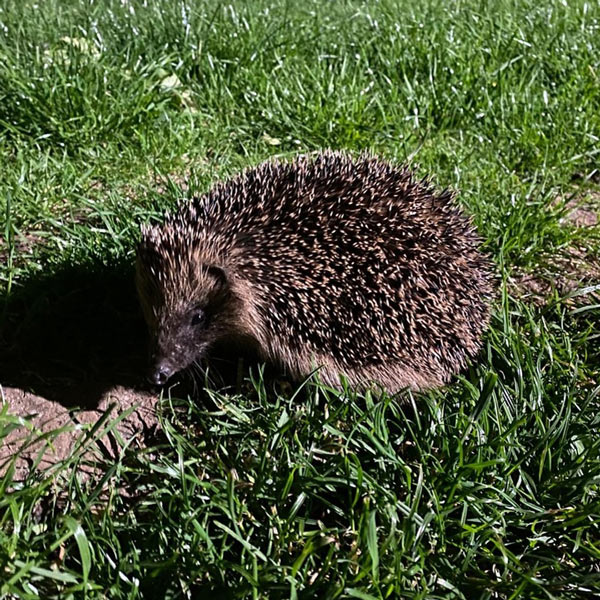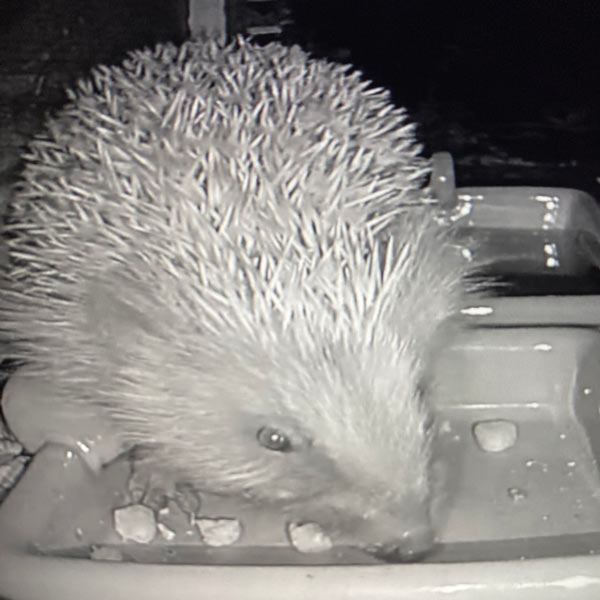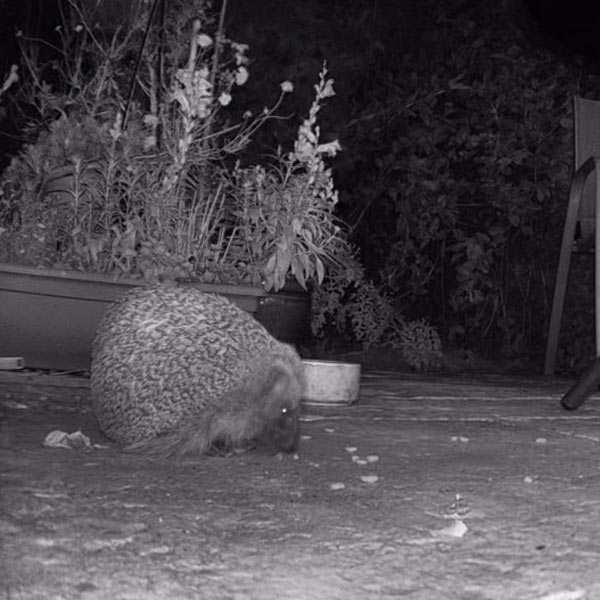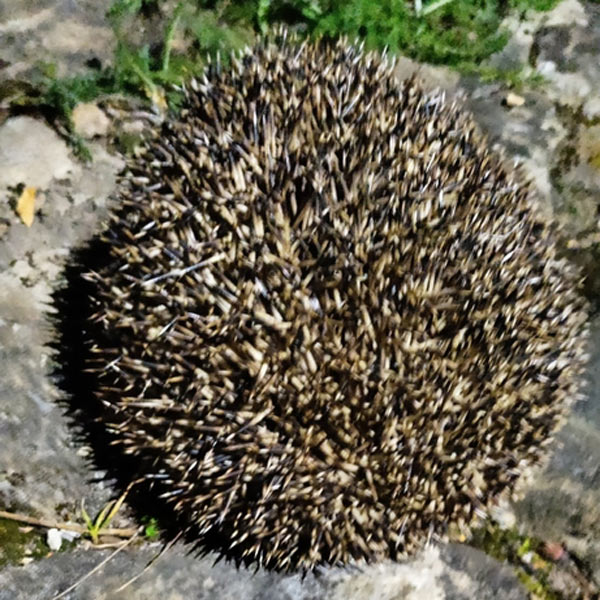Our iNaturalist project has also found hedgehogs - 11 sightings in all. For details of this project head to the
iNaturalist
section of the site.
Some of the best pictures are shown in the graphic below.
It's really important to keep encouraging these lovely animals in our gardens, as the hedgehog population is in decline. This is mostly due to habitat
loss as more intensive agricultural practices increase, and urbanisation, as more and more land is given over to housing.
In urban areas, the population seems to be
stabilising
but rurally, the decline continues.


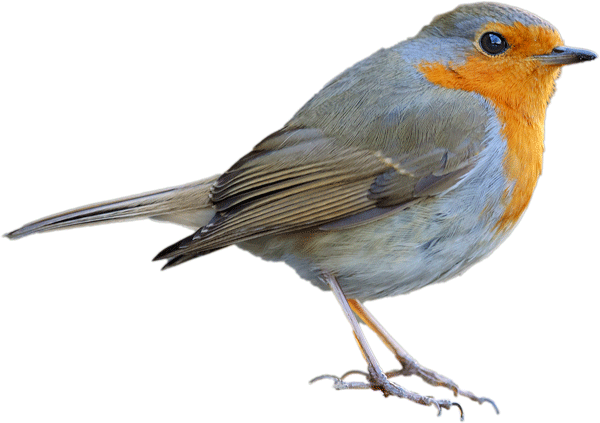
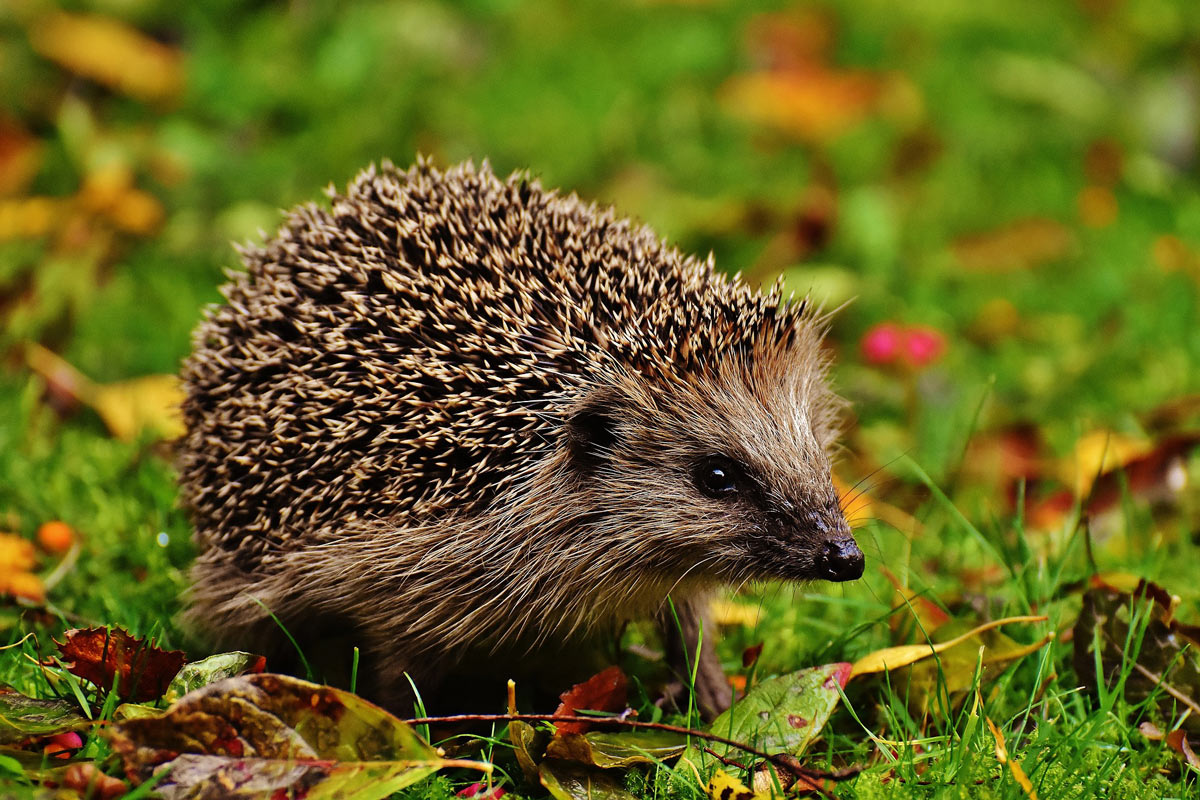 Image by Alexa from Pixabay
Image by Alexa from Pixabay
 In the trap
In the trap
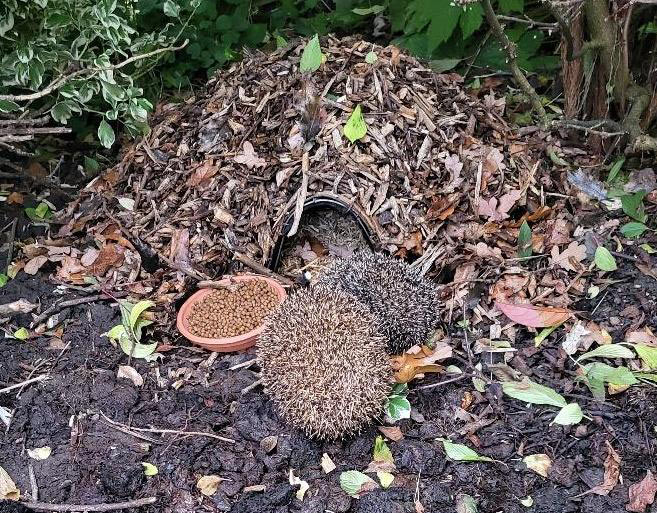 Feeding
Feeding
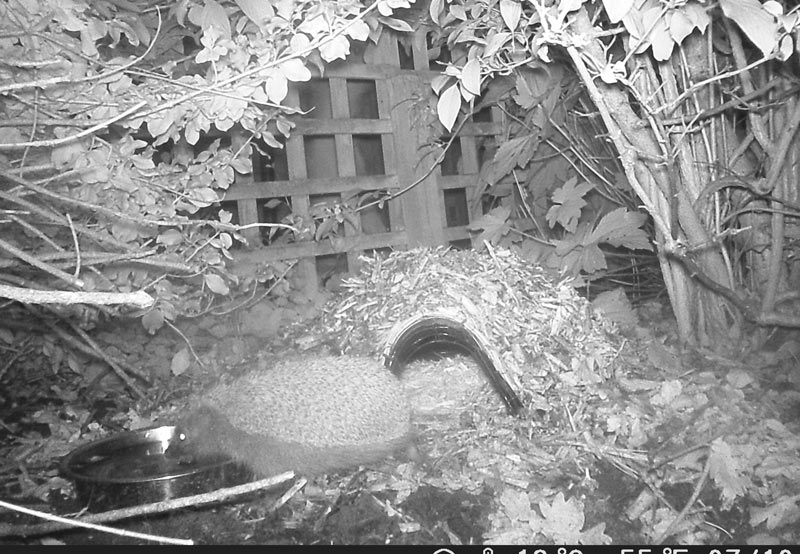 Feeding at night
Feeding at night
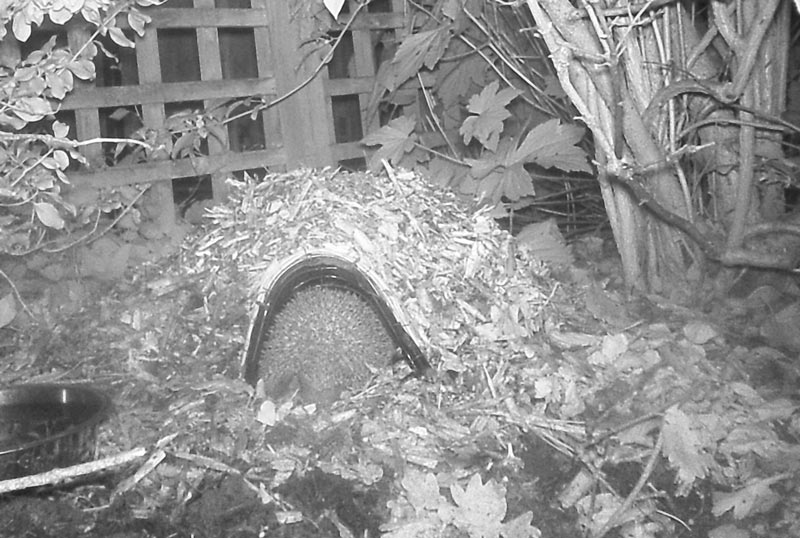 At night
At night
